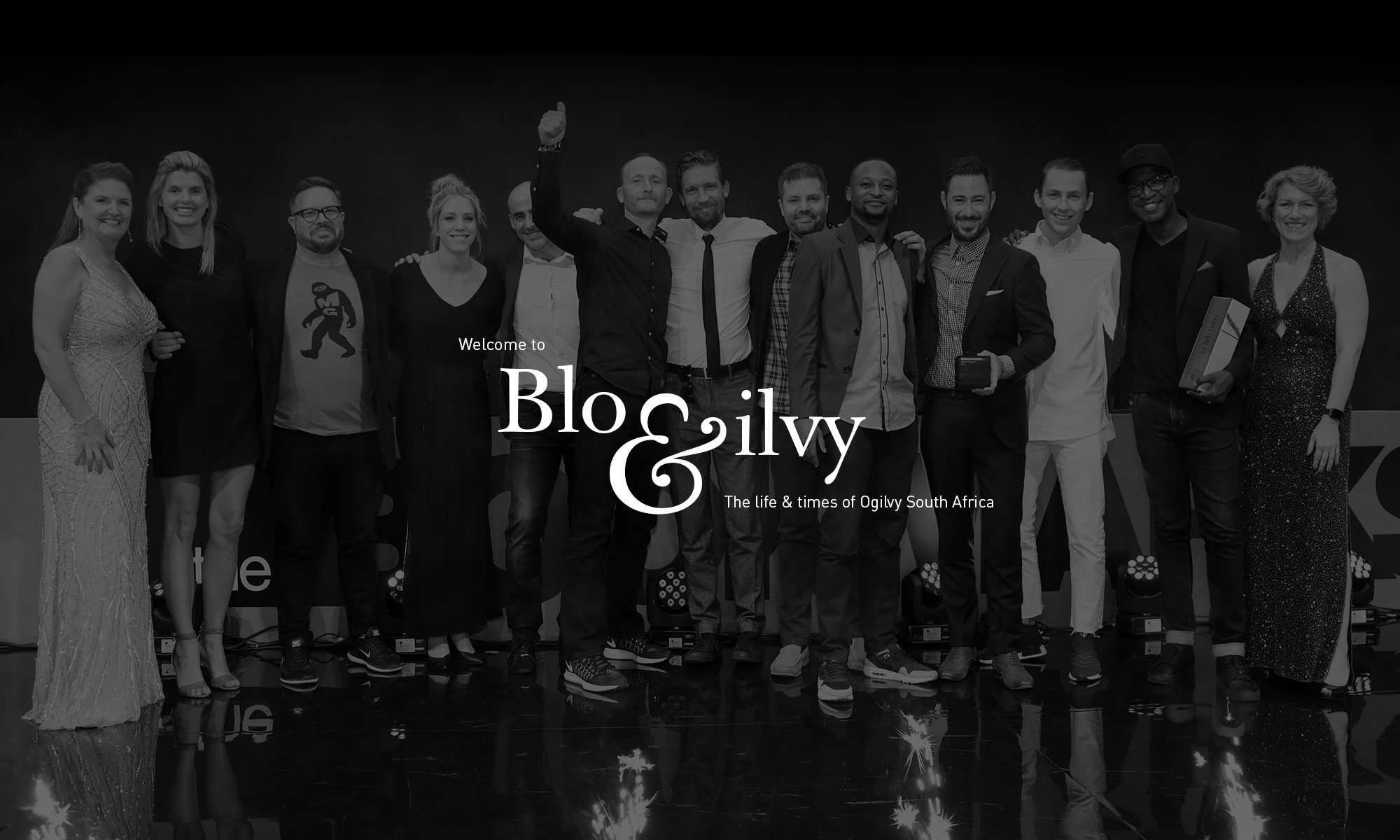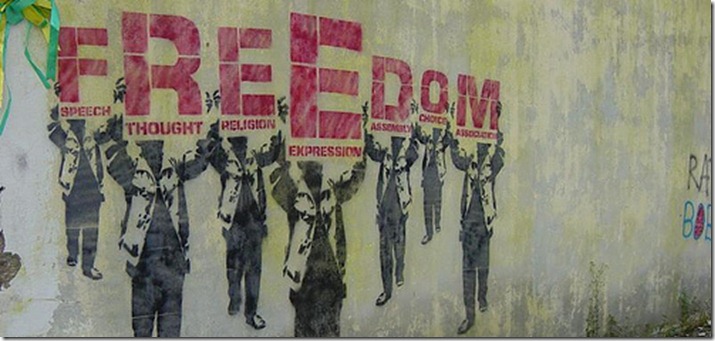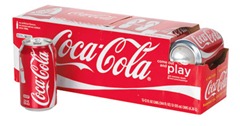Above is Nelson Mandela’s inaugural address to the nation.
18 years ago today South Africa held the first post-apartheid elections in 1994.They were the first national elections in South Africa in which the franchise did not depend upon race.

All things Ogilvy South Africa
Above is Nelson Mandela’s inaugural address to the nation.
18 years ago today South Africa held the first post-apartheid elections in 1994.They were the first national elections in South Africa in which the franchise did not depend upon race.
 Fran Luckin is the Executive Creative Director at Ogilvy Johannesburg.
Fran Luckin is the Executive Creative Director at Ogilvy Johannesburg.
This is the time when we celebrate freedom, in all its manifestations. For people like me,  who work in an industry whose life-blood is creativity, freedom is no less a serious business than it is for anyone else.
who work in an industry whose life-blood is creativity, freedom is no less a serious business than it is for anyone else.
Don’t get me wrong when I talk about the desire for more creative freedom. Parenting manuals (and, probably, more than a few parents) will tell you that total freedom is not a good thing. There need to be boundaries.
A misconception I encounter often, and that that never seems to die, is that great creative people are free-spirited, mercurial, bong-toting beings, as hard to pin down as tiny bashful woodland creatures, who detest rules and discipline, and need to be given enormous rein and scope to ramble about, chasing the Muse.
This is, frankly, rubbish. The best creative people I know are also the most disciplined people I know, with the focus and commitment of endurance athletes.
They know that coming up with a great creative solution requires hours of being chained to a desk, and that having an idea is only the start of a long, arduous process in which the idea has to be hammered out, torture-tested, translated into every possible medium – sometimes only to be dropped, after all that, in favour of another, completely new, idea.
The creative freedom that I – and all of the really good creative people I know – crave, is simply this: the freedom to think about the problem differently.
It can be enormously frustrating to be given a business problem to solve, only to find out the media agency has already solved it by buying 30 second radio ads and quarter-page magazine ads.
Fortunately, there is a strategic shift taking place in the world, in which creative thinking is beginning to rise to the top of the marketing hierarchy.
Design thinking, as it’s called, has emerged from the fringes and been embraced by P&G, Kimberley-Clark, Kraft and Johnson and Johnson. It is what happens when companies realize that not only could they benefit from better product design, but that they might also gain competitive advantage from using the methodology of designers and creative people themselves.
 “Historically, design has been treated as a downstream step in the (product) development process.. the “pretty wrapper” at the end,” according to Tim Brown, CEO of IDEO, the Palo Alto design company that is arguably the most influential in this movement, and the godfather of design thinking.
“Historically, design has been treated as a downstream step in the (product) development process.. the “pretty wrapper” at the end,” according to Tim Brown, CEO of IDEO, the Palo Alto design company that is arguably the most influential in this movement, and the godfather of design thinking.
According to Brown, by around 2000 marketers started to recognize that competition was resulting in parity of quality between every major brand in a given category.
This left only three options: compete on price, innovate faster than the competition or create more unique experiences that consumers could have with brands. Since price wars are ultimately unwinnable, focus naturally fell on the latter two. And that’s where the window of opportunity is for designers and creative people.
Where marketers emphasise charts and data, and generally practise inductive thinking (if x. then y), designers and creative people employ a method that Todd Wasserman, business editor of Mashable, calls “abductive thinking” – taking a creative leap that attempts to solve a problem in previously unforeseen ways.
But enough already with the theory. Here’s a concrete example.
In 2002, Coca-Cola increased its sales by 10% – a significant figure in any industry, and even more so in an industry where a CEO’s career can be made or lost over one or two share points.
This sales increase was achieved, not through a massive media blitz, nor through the introduction of Vanilla Coke – but through package design. 
Specifically, the Fridge Pack: a package that stacks 12 cans in a way that takes up minimal room on the fridge shelf, with an opening that dispenses one can at a time.
How did Coca-Cola come by this innovation, which it calls “the greatest innovation since the contoured plastic bottle was introduced 20 years ago”? The solution came from outside: from Alcoa, manufacturer of the aluminium used to make cans, and Riverwood International, a company that designs and manufactures cardboard packaging.
These two companies organized a brainstorm with engineers, researchers and marketers, where they literally spent a day huddled around a refrigerator, looking for the best way to fit a 12-pack into it.
They were practicing “abductive thinking.” As outsiders, they had license to think about the problem of selling more Coca-Cola in a different way. They put themselves into the consumers’ lives and asked: what is the consumer’s experience of the product beyond the store shelf, beyond the taste of the product?
Their investigations revealed that the 12-pack the industry had been using up until then was like a suitcase -it was too bulky to fit into a refrigerator, so people would put a couple of cans in the fridge, then put the pack, with the remaining cans, in the cupboard.
When all the cold cans were used, people would choose another cold drink from the refrigerator instead of getting out another Coke from the package in the cupboard. The Fridge Pack meant that all twelve cans could fit neatly in the fridge. The dispenser was easy to use and convenient. Voila – a 10% increase in sales.
The Coca Cola example is one demonstration of the fact that people outside of a company are ideally positioned to see the company’s challenges in a unique way.
Creative agencies and design companies, who have the benefit of an intimate relationship with a company without the potential hindrance of being located within it, have the power to see the problem from the inside and the outside.
And they have the methodologies that enable them to think disruptively, “abductively” – to use insight to take a leap beyond the problem to a solution no one had seen before.
In short: it’s time creative people were given the freedom to act as the disruptive innovators they have all the potential to be. So hold the hallucinogenics and give me the freedom to be a co-creator. That’s my kind of high.
Well done to BBH, New York for their inspirational work above for The NYC Rescue Mission. They gave a voice to homeless people by giving them a phone, a twitter account, and then asked them to talk to people online about their day to day life. This post is filed under work we wish we had done.
Wonderful work for Coca Cola by our Ogilvy & Mather Singapore.office. They created and installed an innovative vending machine that gives you a free Coke when people hug it in a specific way! The machine was installed at the National University of Singapore, see how it turned out above.
Another Ogilvy office, this time China, recently tracked down the man behind the Steve Jobs Tribute Image and got him into the studio, below is his fantastic twist on a classic logo. The print is being used as posters around Shanghai. To read more on the story of how it came about go to creativity-online.com.
 The below article was originally written by the ever wonderful Vikki Chowney from econsultancy.com. Visit the site for more articles from some of the worlds top brands, and agencies, on digital marketing and e-commerce insights.
The below article was originally written by the ever wonderful Vikki Chowney from econsultancy.com. Visit the site for more articles from some of the worlds top brands, and agencies, on digital marketing and e-commerce insights.
 When it to comes to innovation; Rory Sutherland certainly knows his stuff.
When it to comes to innovation; Rory Sutherland certainly knows his stuff.
A pure product of evolution himself, he started his career as a classics teacher and is now vice chairman of Ogilvy Group – stopping at the planning department and working as a copywriter along the way.
Though, as an ad man, technology had a huge influence on the way he works with clients, what he’s really interested in is consumer behaviour.
When we sat down just before Christmas, I’d been told to question him about tiny tweaks in design that have mind-boggling changes, starting with the change of a button…
“It’s called the $300m button. There was once an e-commerce site that, once you’d filled your shopping basket and clicked on buy, gave you two choices. Sign-in or register. For reasons that aren’t 100% clear, people really dislike handing over personal information before they’ve bought something, since it’s seen an asymmetric transaction. Once a purchase has been made, it’s a necessity that you need my email so that you can contact me – but I’m not doing that until I’ve bought.”
He explained that the site changed the text on the button from ‘Register’ to ‘Continue’, and added a line explaining that you didn’t have to register but you’d have a chance to later. That single change, which cost about $15 to implement, influenced sales in a way that was directly attributable to the change over the following year by $300m.
What’s interesting is that there was no massive aversion to registration. Of the people that bought, 90% went on to register or save their details. It was just the order to which it was done, and the fact that you felt you were being put into a cleft stick.”
Usability is the name of the game here. A large proportion of the most important people in the software business now are effectively usability experts – and trivial changes really make a difference. So one of the things Sutherland says we need to do is dare to be trivial.
But how do you do that? The search for innovation is a little like jumping on a hamster wheel, ever chasing after your own tail and striving for the next, bigger, better thing. How do you not get caught up in such madness?
“All really successful innovations aren’t simply technological. There’s a very clever psychological aspect to them. I worry now that we’re too preoccupied with technical innovation, in other words, what can we do with silicon, and too little with what people actually want.”
He explained that many businesses are doing things just because they’re possible. Those ideas might not all be complete psychological duds, they may simply be ahead of their time. You have to wait for a market to catch up in some cases because the pace of innovation we now experience is often too fast for people’s natural rate of adoption.
“Very often, innovations that are now successful had a precursor 10 years ago that didn’t quite work. Take PointCast for instance, a little bit of software that sat on your desktop and downloaded news stories when you weren’t using your bandwidth. That was an app before its time.”

Sutherland references Ray Kroc of McDonald’s fame, more specifically his adage that people don’t want the best burger in the world; they want one that’s just like the one they had last time. In other words, meeting expectation is sometimes more satisfying than the ability to surprise and delight.
Bazaarvoice’s report on social trends for 2012, which Sutherland contributed to, predicts that the shift in power from broadcast to fragmented media, from brand to consumer, from paid media to earned media, collectively requires a new focus for businesses: an obsessive devotion to understanding and delighting customers. Yet he sees the two things as very different.
“I think surprise and delight is something we like in small doses, and with an interval between elements of surprise. It’s always worth remembering that people that stay in a hotel once a year want to be delighted, people who stay in a hotel ten times a year and are therefore ten times more valuable, probably are more keen on predictability.”
He points to Amazon as another example here, saying that the website has never been through a major redesign – it’s a product in continual evolution. “You’d never turn up and go, what the hell’s going on here?”
Yet there’s definite pressure, from the media, from industry and business, competitors and investors, to change and evolve.
“Well that’s another danger of course, who are you innovating for exactly?”
Sutherland explains that for a site like Amazon, at the request of the most vociferous and frequent customers, you could end up adding more and more functionality until if you’re not careful, it becomes unintelligible to anyone arriving at it for the first time.
The Nintendo Wii is another example of what you might call inverse innovation. Before its launch, the computer games industry had become more about the perfect rendering of graphics – and some of the basic elements that makes a game, a game, had been lost. By targeting a tribe of hardcore, first-person, ‘shoot ‘em up’ gamers, who are of course very valuable, you’ve disenfranchised and alienated a whole other group of people.
The Wii does not try to impress a market that already existed, but instead attracts a whole new type of gamer.

“What we value and appreciate, and what improves our life, is often generated by subconscious parts of the brain that we don’t have full access to, and the actions of which we can’t really explain – not even in retrospect. So we do things without understanding why, and sometimes having done them we’ll create a post rationalisation. And this is often an inaccurate picture of why people buy.”
He references James Dyson, who is famously dismissive of marketing and very pro-engineering. But the truth of the matter is that people buy Dyson vacuum cleaners because deep down, the choice is more aesthetic than it is functional. Dyson claims it’s because they don’t lose suction – but in truth we buy them because they look great and we want to own one.
When asked, that doesn’t seem like a very valid reason, so what people actually say is that it was bought because of its superior suction power.
“It’s very easy to misrepresent marketing and underplay it, because consumers are so keen to contrive rational reasons for why they do something. If you want to innovate, they are two sources of information on top of what’s technically possible. One of them is conventional market research, where people tell you what they want. The other is logic, which is what people should want in a perfectly sensible universe where everyone’s an accountant.”
But what Sutherland makes clear is that neither of these has great predictive value. So is there any way to make the most of that subconscious response?
One solution is just regular experimentation.
“How did Ray Kroc get to that insight about burgers? Realistically he must have got there by experimentation, because logic doesn’t tell you that. If you ask people in research, people will present themselves as if they’re maximisers (a concept devised by Herbert Simon at Carnegie Mellon). Simon says that most people want to present themselves as getting the very best out of a decision, maximising it, but in reality it’s just about satisfying – finding something that’s not perfect, but will do.”
Because people misrepresent the way and why they makes decisions to save face or even subconsciously, this has quite important consequences for innovation. Sutherland says this is why it’s so difficult to create an ‘iPhone killer’, since being bit better than something that’s already established, doesn’t win.
He says that habit is an incredible human force. The impossible challenge is not to create something better, but something that will encourage people to experiment with something new. Once someone reaches a level where they’ve found a product that not quite but near perfect, dislodging that can be sheer murder.
“Though I can rationally accept that an Android tablet may be better than the iPad, on many dimensions, the iPad is established in my mind as the low-risk default purchase and the Android tablet is the slightly eccentric one. It’s very difficult to overcome something that’s seen as the safe choice. People want to seem rational; they will admit that one thing is better than the other, and say they’ll purchase in that way. But they don’t, they tell you that, and then they go out and buy an iPad.”

“One of the most valuable things about a brand – and only a brand – is that those people who like that brand will be able to adopt a level of innovation from it that they wouldn’t from a stranger.”
So who or what is making the most of this idea at the moment?
“It’s completely wrong to discount something radical, but what’s more sensible for media advertisers, agencies and owners to do is to proceed as if it is now more important for us to understand how people relate to technology than it is for us to actually try to tinker with the technology itself.”
He added that the social media has exhibited some of these tendencies over the past few years, since people got over-excited by it. Those that missed that ‘last big thing’ were very keen not to do the same again, and so had a tendency to over-compensate.
“What we really need to understand is the psychological effect of this stuff. What level does technology change behaviour, when does it encourage good and discourage bad?”
Sutherland believes that a huge part of this is being comfortable with failure, and talks about Google Wave as a perfect example. “Unfortunately there are many ideas that have great potential, but never reach the critical mass they need to be successful.”

He also talks about QR codes under the same guise, saying that they suffer the same problem as Barclays’ contactless payment system. The most instinctive part of the brain, which makes almost all of the decisions, is very short term. So a minor upfront irritation acts as a fairly major discouragement to new things.
To make a QR code work there will be a delay of at least 10 seconds while you get your phone out, orient it and such, which makes it exasperating. Similarly, contactless payments should, in theory, be very appealing. But when you’re at the till, you first have to ask the person at the till to turn on the port – which is slower than tapping in a pin – but more importantly, it’s the first thing you have to do.
“If this came later in the process, say you tapped the card and then confirmed that you wanted to pay with contactless payment – people might be much more prepared to do it. It’s a great shame since it’s ruined by a tiny detail. Just like the CD was not purely killed off by the onset of digital music, but the sheer awfulness of the CD case. There’s no pleasure of ownership over music in physical form when it’s a CD. People still get really emotional over vinyl.
My best advice is to do the exact opposite of what everyone else is doing. This is actually a very good approach for innovation. While everyone’s out there crowding around one particular field, just go play elsewhere.”
Echoing his presentation at Wired 2011 last year, he says that from now onwards, there are three questions people interested in ‘innovation’ should ask themselves. Does it make economic sense? Does it work technologically and make the most of technological advancements? Does it work psychologically?
“The sweet spot lies between those, and further progress will be made by working harder to align those three circles.”